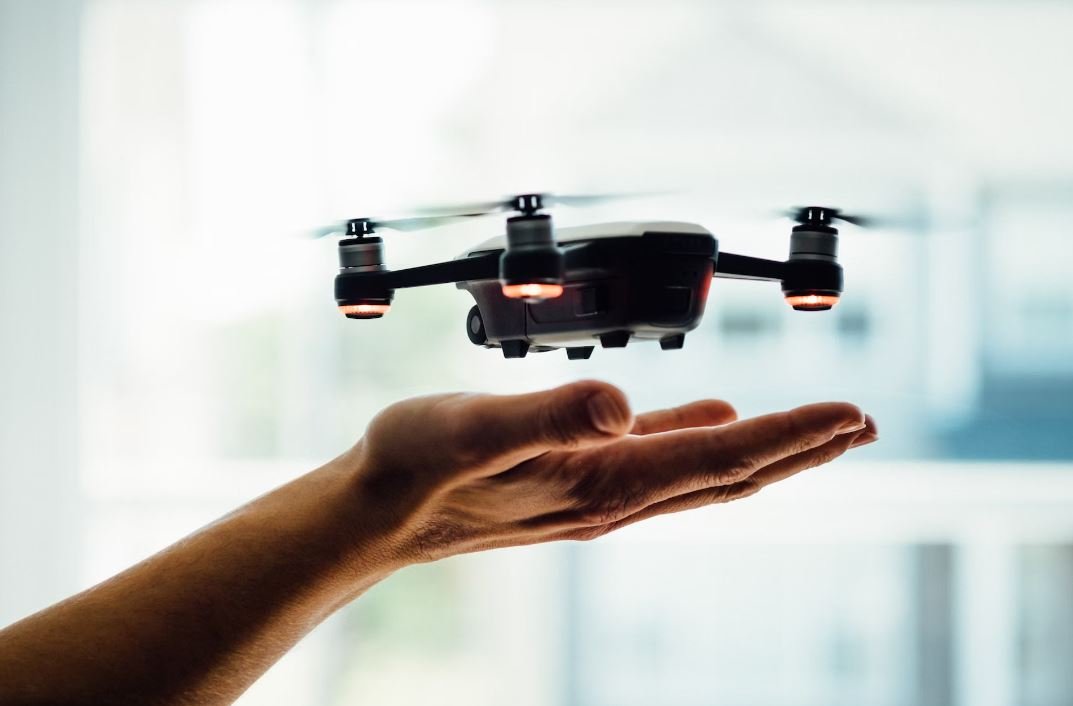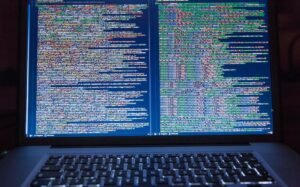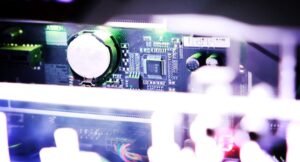AI Applications Prior to the Year 2000
Artificial Intelligence (AI) has made remarkable advancements in the past few decades, but its history goes back much further than many realize. While AI may seem like a recent technological development, various practical applications of AI were being explored and implemented well before the year 2000. These early AI applications laid the groundwork for the sophisticated AI systems we see today. In this article, we will explore some of the notable AI applications prior to the turn of the millennium.
Key Takeaways:
- AI had applications in diverse areas such as gaming, natural language processing, and robotics.
- Early AI systems faced limitations and lacked the computing power and data accessibility of today.
- Despite challenges, AI applications in the past revolutionized industries and set the stage for future advancements.
Gaming: Learning to Play Like Humans
One of the early AI applications centered around gaming, specifically chess. In 1997, IBM’s Deep Blue AI system, designed to play chess, made headlines when it defeated world chess champion Garry Kasparov in a six-game match. Deep Blue accomplished this feat by evaluating millions of possible moves per second, utilizing minimax algorithms and heuristic functions to determine the most advantageous moves. The victory of a machine over a human grandmaster was a major milestone in AI history. *The development of Deep Blue demonstrated the immense potential of AI systems to master complex games through brute force calculation and intelligent decision-making.*
Natural Language Processing: Conversing with Machines
Another area where AI made significant advancements before 2000 was natural language processing (NLP). NLP focuses on enabling computers to understand and respond to human language. Early AI systems like ELIZA (1966) and SHRDLU (1970) pioneered the field, showcasing the potential for computers to hold conversations with humans. ELIZA, a program designed to simulate a psychotherapist, used pattern matching to generate responses based on user inputs. SHRDLU, on the other hand, demonstrated the ability to manipulate blocks in a simulated environment based on spoken commands. *These early AI systems laid the foundation for modern virtual assistants, chatbots, and language translation technologies.*
Robotics: Automating Physical Tasks
AI’s potential to automate physical tasks was explored in the field of robotics long before the turn of the millennium. In 1997, Honda introduced ASIMO, a humanoid robot capable of walking, recognizing faces, and interacting with its surroundings. ASIMO’s advanced AI systems enabled it to navigate complex environments and perform tasks like carrying objects. *ASIMO’s development showcased the progress made in AI-based robotics and paved the way for future advancements in automation and human-robot collaboration.*
Tables:
| Year | Application | Significance |
|---|---|---|
| 1956 | AI’s “Dartmouth Conference” | Marked the birth of AI as a field of research. |
| 1974 | Expert systems | Early AI applications in areas like medicine and finance. |
| 1981 | First autonomous mobile robot | Introduced the concept of AI robotics. |
| Year | Application | Significance |
|---|---|---|
| 1966 | ELIZA | Showcased early capabilities of conversational agents. |
| 1970 | SHRDLU | Introduced AI systems capable of manipulating objects based on spoken commands. |
| 1996 | IBM’s Deep Blue | Defeated world chess champion Garry Kasparov, demonstrating AI’s prowess in complex strategic games. |
| Year | Development | Significance |
|---|---|---|
| 1989 | First Mars rover | Explored the possibilities of AI in space exploration. |
| 1997 | Honda’s ASIMO | Advanced humanoid robot with AI capabilities. |
| 1998 | LEGO Mindstorms | Introduced programmable robotics for educational purposes. |
AI Laying the Foundation for the Present
These early AI applications achieved significant milestones and laid the foundation for the AI systems we use today. While limitations in computing power, data availability, and technology constrained progress, pioneers in the AI field pushed the boundaries of what was possible. The achievements in gaming, natural language processing, and robotics showcased AI’s potential and set the stage for the technological advancements we are witnessing today. *The journey of AI, however, continues, with ongoing research and development making AI an indispensable part of our world.*

Common Misconceptions
Misconception: AI in the 2000s was as advanced as it is today
One common misconception is that the level of artificial intelligence (AI) technology available in the 2000s was as advanced as it is today. However, this is far from the truth. Back then, AI technology was in its infancy, and many of the applications we see today were not yet developed or were in very early stages of development.
- AI in the 2000s was primarily focused on basic tasks like speech recognition and simple decision-making.
- Machine learning techniques were not as advanced, limiting the ability of AI systems to learn and adapt over time.
- AI applications in the 2000s had limited real-world applications compared to today.
Misconception: AI would completely replace human jobs by 2000
Another common misconception was that AI would completely replace human jobs by the year 2000. While there were concerns about the impact of AI on employment, this prediction did not come true. AI technology at that time lacked the capability to fully replicate human cognitive abilities and was limited in its effectiveness in complex tasks.
- AI in the early 2000s was not capable of sophisticated tasks that required intuition, creativity, or complex decision-making.
- Jobs that require human empathy, social skills, or physical agility were not easily replaceable by AI.
- AI technology in the 2000s actually created new job opportunities in the field of AI research and development.
Misconception: AI applications were limited to science fiction
A common misconception about AI applications prior to the year 2000 is that they were limited to science fiction and had no real-world applications. While AI was certainly an element in science fiction, there were tangible and practical AI applications being developed and implemented in various industries.
- AI was being used in areas such as finance, healthcare, and manufacturing for tasks like fraud detection, medical diagnostics, and process automation.
- Real-world AI applications in the 2000s were not as prevalent or easily recognizable compared to today, but they were indeed present.
- AI technology was being incorporated into everyday consumer products like speech recognition software and recommendation systems.
Misconception: AI was only for large organizations and governments
Another misconception was that AI technology was only accessible to large organizations and governments due to its complexity and high costs. While it is true that AI research and development required significant resources, there were also efforts to make AI technology more accessible to smaller organizations and individual developers.
- Open-source AI frameworks and libraries were available, allowing developers to experiment and create AI applications without significant financial investment.
- AI technology was becoming more affordable and scalable, making it more accessible to a wider range of organizations.
- Small businesses and startups were leveraging AI technology to gain a competitive edge, even in the 2000s.
Misconception: AI was only about mimicking human intelligence
One misconception about AI before the new millennium was that it was solely focused on mimicking human intelligence. While human-like AI capabilities were undoubtedly a goal, AI research and development also sought to create systems that could excel in specialized tasks beyond human capabilities.
- AI applications in the 2000s were designed to solve specific problems by leveraging advanced computational techniques.
- AI technology aimed to enhance human capabilities rather than replace them entirely.
- AI research focused on developing systems that could process and interpret large amounts of data, leading to advancements in fields like data analytics and pattern recognition.

AI Applications in Healthcare
Artificial intelligence has had a significant impact on healthcare before the turn of the millennium. In this table, we highlight some notable AI applications in the medical field.
| Year | AI Application | Impact |
|---|---|---|
| 1985 | Expert Systems for Diagnosis | Improved accuracy in diagnosing diseases |
| 1992 | Robotic Surgery | Precision and minimally invasive procedures |
| 1995 | AI in Drug Discovery | Accelerated drug development and identification |
AI Applications in Finance
The finance industry has also embraced the power of artificial intelligence. Here, we describe some significant AI applications in the financial sector.
| Year | AI Application | Impact |
|---|---|---|
| 1990 | Fraud Detection | Improved accuracy in identifying fraudulent activities |
| 1997 | Automated Trading | Increased efficiency and faster decision-making |
| 1999 | Credit Scoring | Enhanced credit risk assessment |
AI Applications in Transportation
The transportation industry has harnessed the potential of AI to enhance various aspects of mobility. Explore some notable AI applications in this field.
| Year | AI Application | Impact |
|---|---|---|
| 1990 | Intelligent Traffic Management | Reduced congestion and efficient traffic flow |
| 1994 | Autonomous Vehicles | Potential for safer and more efficient transportation |
| 1998 | Smart Parking Systems | Streamlined parking space utilization |
AI Applications in Entertainment
The entertainment industry has also been transformed by AI technologies. Here are some intriguing AI applications in entertainment before 2000.
| Year | AI Application | Impact |
|---|---|---|
| 1987 | Recommendation Systems | Personalized content recommendations for users |
| 1993 | AI Characters in Video Games | Enhanced gaming experiences and realistic interactions |
| 1999 | Automated Music Composition | Creative generation of music pieces by AI algorithms |
AI Applications in Manufacturing
The manufacturing industry has also witnessed AI’s transformative potential. Discover some key AI applications in manufacturing.
| Year | AI Application | Impact |
|---|---|---|
| 1991 | Quality Control | Improved product quality and reduced defects |
| 1995 | Supply Chain Optimization | Efficient inventory management and cost savings |
| 1998 | Robotic Assembly Lines | Increased efficiency and precision in assembly processes |
AI Applications in Communication
The advancement of AI has greatly influenced communication technologies. Check out some significant AI applications in the field of communication.
| Year | AI Application | Impact |
|---|---|---|
| 1989 | Speech Recognition | Improved accuracy in converting speech to text |
| 1994 | Automated Translation | Real-time language translation facilitating global communication |
| 1997 | Email Filtering | Efficient spam filtering and organization of incoming emails |
AI Applications in Education
The educational landscape has experienced AI interventions, empowering learning experiences. Explore some key AI applications in education.
| Year | AI Application | Impact |
|---|---|---|
| 1992 | Intelligent Tutoring Systems | Personalized learning and adaptive feedback |
| 1995 | Automated Grading | Efficient evaluation and feedback generation |
| 1999 | Virtual Reality in Education | Immersive and engaging learning experiences |
AI Applications in Agriculture
AI has also revolutionized the agriculture sector, offering innovative solutions to address various challenges. Discover some remarkable AI applications in agriculture.
| Year | AI Application | Impact |
|---|---|---|
| 1988 | Precision Farming | Optimized resource utilization and increased efficiency |
| 1993 | Plant Disease Detection | Early identification and timely treatment of plant diseases |
| 1999 | Automated Harvesting | Efficient and timely crop harvesting processes |
AI Applications in Space Exploration
AI has played a crucial role in advancing our knowledge of space and supporting exploration endeavors. Let’s explore remarkable AI applications in space exploration.
| Year | AI Application | Impact |
|---|---|---|
| 1994 | Autonomous Rovers | Enhanced exploration capabilities and data collection |
| 1996 | Spacecraft Navigation | Precision navigation and course correction |
| 1999 | Deep Space Communication | Reliable and efficient communication across vast distances |
Artificial intelligence applications prior to the year 2000 have brought about significant advancements in various fields. From healthcare to finance, transportation to entertainment, and many more, AI has transformed industries by improving efficiency, accuracy, and decision-making capabilities. The early adoption of AI technologies signifies the immense potential they hold for addressing complex problems and creating new opportunities. As AI continued to evolve beyond the millennium, these early applications laid the groundwork for the AI-driven world we live in today.
Frequently Asked Questions
What are some AI applications developed prior to the year 2000?
Some AI applications that were developed prior to the year 2000 include expert systems, natural language processing, speech recognition, computer vision, and autonomous robots.
How was AI used in expert systems?
In expert systems, AI was used to capture the knowledge and expertise of human experts and emulate their decision-making processes. These systems were used in various fields, such as medicine, finance, and engineering, to provide expert-level advice and solutions.
What were the applications of natural language processing in the pre-2000 era?
Natural language processing (NLP) had applications in machine translation, information retrieval, and text analysis. NLP systems aimed to understand and generate human language, enabling computers to interact with humans more effectively.
How was AI applied in speech recognition?
AI-powered speech recognition systems were developed to convert spoken language into written text. These systems found applications in voice-controlled interfaces, telephone voice response systems, transcription services, and more.
What were the early applications of computer vision in AI?
Computer vision, combined with AI techniques, was utilized in various applications such as image recognition, object detection and tracking, and facial recognition. These technologies were used for security systems, industrial automation, and in some experimental cases, visual perception for robots.
What were some examples of autonomous robots pre-2000?
Pre-2000, autonomous robots were developed for specific tasks such as industrial assembly, navigation, and exploration. For instance, NASA developed Mars rovers that were capable of independently exploring the Martian surface and sending back valuable data.
How did AI impact healthcare prior to the turn of the millennium?
AI applications in healthcare before 2000 included diagnostic systems that could analyze medical records and symptoms to provide initial diagnoses, as well as intelligent monitoring systems that could analyze patient data and detect anomalies or potential risks.
What were the primary challenges in AI application development prior to 2000?
Some challenges in developing AI applications prior to 2000 included limited computing power and memory, lack of standardized tools and libraries, scarcity of labeled training data, and the complex nature of modeling human intelligence. These factors posed significant obstacles to AI progress at the time.
Were there any notable failures or limitations in AI applications before the year 2000?
Yes, there were notable failures and limitations in AI applications pre-2000. Some expert systems, despite being sophisticated, had limited real-world applicability due to difficulties in capturing the nuanced expertise of human experts. Additionally, early speech recognition systems often struggled with accuracy and robustness, hindering their widespread adoption.
How has the development of AI applications evolved since the late 20th century?
Since the late 20th century, there have been significant advancements in AI due to breakthroughs in machine learning algorithms, the availability of large-scale labeled datasets, and the increase in computing power. These advancements have led to the development of more powerful and versatile AI applications across various fields.





